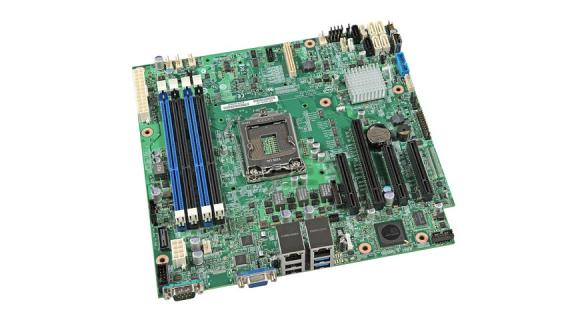
Sponsored by Intel
What is Intel GVT, and how can it help speed up the design process?
By Robert Green
![]() Our day-to-day workstation power problems are common: CAD users work in branch offices all over the country (or world), slow WANs make sharing CAD files difficult, workstations with widely varying equipment specifications slow design work, graphics drivers act cranky, and all of our work must be backed up and secure. If you’re a CAD manager or IT administrator you’ve likely wrestled with most of these issues at some point.
Our day-to-day workstation power problems are common: CAD users work in branch offices all over the country (or world), slow WANs make sharing CAD files difficult, workstations with widely varying equipment specifications slow design work, graphics drivers act cranky, and all of our work must be backed up and secure. If you’re a CAD manager or IT administrator you’ve likely wrestled with most of these issues at some point.
Server-hosted workstations — built on Intel Graphics Virtualization Technology (GVT) and accessed from virtually any device using Citrix XenDesktop and HDX 3D Pro software — offer an integrated solution to these common CAD headaches. In a four-part series sponsored by Intel, I’ll examine server-hosted workstation solutions from the perspective of a CAD manager to help you determine if this option is right for your office. In this installment, Part 1, I’ll explain the basics of the technology and discuss its general benefits and feasibility for CAD applications.
What is a Server-Hosted Workstation with GVT?
Simply put, a GVT server-hosted workstation is a single card workstation — referred to as a cartridge or sled — containing an Intel Xeon processor with Intel Iris Pro or HD Graphics, plus system RAM and a hard drive (or solid state disk) for storage.

Figure 1. The Intel Server Board S1200V3RPO. Image courtesy of Intel.
These GVT workstation cartridges or slides are plugged into a rack-mounted case that provides power and connections to your company’s network infrastructure. Then, depending on the manufacturer of the cartridge/rack system, anywhere from 12 to 45 cards can fit in a single 3U- to 5U-server.

Figure 2. Depending on the side of the system, you can house up to 45 cartridges in a GVT server-hosted workstation system. Image courtesy of Intel.
From there, users can “see” the remote workstation cartridge from their tablet, laptop, or remotely located workstation using a Citrix Receiver, much like using any remote desktop sharing tool. The CAD software then runs on the server cartridge (which utilizes the Windows Server operating system) in conjunction with Citrix XenDesktop and HDX 3D Pro software. The result is a highly compressed, low latency stream of full motion 3D graphics being sent to the user while keyboard/mouse instructions are received from the user. Since only screen and mouse data is being transmitted very little network bandwidth is required even for large scale CAD projects.
Theoretical Benefits
Without delving into extensive technical details right now, (we'll get to those in upcoming installments) it becomes clear that there are some powerful potential benefits of GVT server-hosted workstations in CAD environments, including:
Why Haven’t We Already Done This
Given the potentially compelling benefits of the approach, it seems like companies would already be running their CAD applications on server-hosted workstations, yet they aren’t. Many industries such as banking/finance, medical records, and reservations have used virtual workstation technology for years, so why have CAD users resisted the concept?
To be honest, until now the workstation cartridges available simply weren't up to the task. CAD users don’t run low power, low resolution graphics applications, so while prior generations of low power, server-hosted computing devices have proven some benefits, they haven’t had the power to run the CAD applications properly.
The new generation of Intel Xeon workstation cartridges is a game-changer and provide substantial real world CAD specs including:
These specifications actually exceed many standalone workstations in today’s market — particularly when configured with high speed solid state disks (SSD). These specs are adequate to run all but the most aggressive CAD/rendering applications well.
Is It Feasible?
So, if the workstation cartridges are robust enough to run CAD applications and the approach eases our network/remote bandwidth issues, it seems like server-hosted workstations are at least worth investigating. To get a true picture of how the approach might work for your company, you’ll need to analyze at least the following:
In upcoming installments we'll examine these questions in detail as we continue to investigate the feasibility of server-hosted workstations. How could this approach change the way you used and support CAD? Start to think about your company’s environment and come back next week for more discussion. Until next time.
Robert Green performs CAD programming and consulting throughout the United States and Canada. He is the author of Expert CAD Management: The Complete Guide. Reach him via his web site, www.cad-manager.com.









